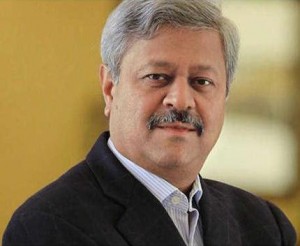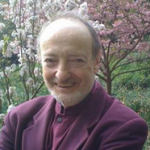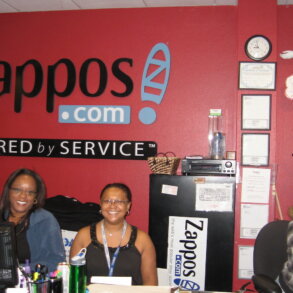An interview of Sudhakar Ram by George Pór for Enlivening Edge
 Sudhakar Ram is the Chairman and Managing Director of Mastek Ltd. His mission is to affect a marked shift in leadership, commitment, creativity and culture. He is also the author of “The Connected Age: Being the Best You Can by Reinventing Your World.” The book is a futurist’s vision for a new world and a guidebook about personal change. It is based on Mr. Ram’s blog “The New Constructs” that is followed by more than 46,000 readers. You can read a review of the book written for Enlivening Edge, here.
Sudhakar Ram is the Chairman and Managing Director of Mastek Ltd. His mission is to affect a marked shift in leadership, commitment, creativity and culture. He is also the author of “The Connected Age: Being the Best You Can by Reinventing Your World.” The book is a futurist’s vision for a new world and a guidebook about personal change. It is based on Mr. Ram’s blog “The New Constructs” that is followed by more than 46,000 readers. You can read a review of the book written for Enlivening Edge, here.
“Ram is a powerful example of the ‘reflective practitioner’, a person deeply immersed in the practical realities of the world and simultaneously thinking deeply about the larger needs of society.” (Peter Senge)
The personal context
George Pór: Sudhakar, you’ve been thriving at the heart of mainstream business. The depth of the issues you are dealing with in your book is way beyond the ordinary concerns of the business world. What personal experience made you go beyond those concerns and ask profound philosophical questions?
Sudhakar Ram: I’ve been on a path towards maturity or spirituality for almost 25 years now. I’ve had various experiences along the way. But it was in the last 6 years that everything came together for me. I realized there were many issues that were similar not just in the company but also across the globe. I started blogging about the idea of a connected world in a blog called The New Constructs, at which point I started meeting a number of interesting people in different walks of life and they helped me enrich and come up with a coherent picture.
Mahatma Gandhi and self-management
As humanity we are stuck in an old industrialist paradigm that is so influential because we have all been born and brought up in this system and living in a social environment that still takes for granted many of the constructs of the industrial age.
The more I looked at it, I saw that it actually connects to something that Gandhiji said many years back when he talked about having a distributed rather than centralised system. He saw that a centralisation of power was a bad option. There would be a concentration of power and in the end it would lead to corruption.All that came together for me, and I saw that there was a common set of principles that we can use to support life going forward in relation to the companies we run, markets, governments, and the way the world turns around.
So that was the thought process in coming up with the book.
George: Well, that’s very interesting, your reference to Gandhi’s work and advocating village-based self-governance, the panchayati raj, as the foundation of India’s political system. It means that self-organization and self-management also have a homegrown, Indian root.
Your book’s subtitle says, “being the best you can by reinventing your world.” That’s a very fascinating proposition. Would you say more about what is the relationship between one person trying to be the best she or he can, on one hand, and reinventing his/her world, on the other hand? How do you see the connection?
Pursuing one’s unique calling, as people and organizations
Sudhakar: I think that at the fundamental level the only thing that you can do as an individual is change yourself; like Gandhiji said, ‘You have to be the change you want to see in the world’.
Another thing about being the best you can be is that there is no common definition of “best.” Everyone is beautiful in his or her own way. It’s a question of people willing to first accept themselves in their own skin rather than trying to be someone else, willing to accept what they are great at. You can’t expect a donkey to be a horse or a horse to be a donkey. Each one of us is unique and we need to be comfortable in our own uniqueness and be able to play that out fully. So it’s not about being the best in the world’s eyes but am I living to my full potential; that’s the best I can be.
The question at the individual level is, “Can I pursue my true calling?” The same is true of an organisation.
Every organisation wants to be number one in size but that’s ridiculous – so each organisation needs to find what its space in the world is, its natural talent, and excel in that.
So the idea is that you have to be the best you can be – excel in that. Every individual has their own unique destiny and own unique path – you have to get out of your comfort zone and stretch fully in that direction and that you can do by reframing your world, by reinventing your world.
George: Yes, I see. You mentioned that each organisation has to find its unique purpose and that reminded me that Frederic Laloux is talking in RO about discovering the evolutionary purpose. Did you read his book?
Sudhakar: Yeah, I’ve read it about 5 times and I’m also in touch with him and getting input from him about our transformation at Mastek.
George: That’s good to hear. Can you say something about the evolutionary purpose of Mastek and how it has been discovered?
The evolving purpose of Mastek
Sudhakar: I think that there’s a natural way of understanding what the true purpose of an organization is. I think it is similar to bringing up my daughter. So how would I discover what is my daughter’s true purpose? There is nothing that my wife or I have in mind that we can thrust on her. She has her own destiny. So it’s the same with Mastek. My job and the job of the board is to allow Mastek to come up with its own purpose, so that’s the way I view it, and it’s becoming more and more clear over time. But I don’t think purpose can ever be cast in concrete, and that’s why I like Frederic’s notion of an evolving purpose rather than a purpose statement you can put up on the wall.
The more I look at it, the purpose of Mastek is a space where people are supported to be the best they can be.
So it’s to help the people and the clients to be the best they can be. We provide them the IT enablement, but beyond IT, most Mastekeers experience that they grow as individuals. We also have a very active alumni network. So even after leaving Mastek the people stay in touch, and we have a company saying “Once a Mastekeer always a Mastekeer;” we call our people Mastekeers.
George: Yes, I heard “You may take a Mastekeer out of Mastek, but never Mastek out of a Mastekeer!”
Sudhakar: Yes, they remain committed and they keep coming back, and they say that what they learned and the connections they made remain for life. We have not experienced that in any other organization that we have been in. So we don’t think: “the people are part of Mastek when they are with us, and then when they are gone they are no longer our friends.” We remain in connection with all who would like to stay in touch with Mastek. The whole thing is seen as a space where people can actually flower, where they can actually grow and develop on a consistent basis.
George: Who articulated, who expressed that purpose? How did it come to be recognized?
Sudhakar: I was listening; I expressed it, but it came from various conversations. I just put it together as an expression.
Self-management at Mastek
George: You mentioned, there is a Board and you have senior executives. What is the relationship between that leadership structure and the self-management in the organisation?
Sudhakar: The management structure is also running as self-managed teams broken into three streams of activity.
- The main is software projects organisation. In a software project we have two kinds of teams that operate. One is the team that actually delivers the software; the other is the program management team who coordinate with the customer, understand what the customer requires, and guide the execution teams. So those are the two major streams with regards to delivery and account management. They all set up their own goals. They aim to wow our customers; it’s about growing our talent and getting people to be more engaged with the company; it’s about growing our reputation within the industry and making contributions to open source and also growth and profitability. So those are the main aspects on which they set up their own goals. So that’s one.
- The other part of the organisation is what we call vertical teams, which are about acquiring new customers in the chosen verticals. Obviously the delivery teams form the largest part; almost 85-90% of the organisation will be in the execution team or program leadership team. Small parts of sales people, and account managements, will be in the vertical team.
- Then we have other support functions like HR and finance and so on, which are organised as their own teams. All of them set their own goals on the basis of broad outcomes in customer advocacy, employee engagement, industry reputation, open source contribution, and so on.
George: And who defines what a person is accountable for?
Role definition and accountability system
Sudhakar: Each person belongs to a centre of excellence, based on a stream of the work. So if they are Business Analysts they will be in a BA centre of excellence; if they are solution architects or Java developers, they will be in another, and so on. The allocation of accountabilities, broadly speaking, is decided between the centre of excellence and the individual.
But what they actually work on is in project teams. We also encourage people to choose to be in multiple teams. If they have the ability, we actually encourage them to work across the organisation in multiple teams.
George: That’s a little bit Holacratic multi-roles, except that they talk about circles and roles.
Sudhakar: Yes it’s similar, but I find Holacracy to be too systematised. I’ve spoken with them, but we don’t need that level of complexity in our structure, given that we are a project-based business, so customers come to us with a need or vision that they have, and they want us to convert it into software. This is fairly straightforward, and what we do is consistent, so we can do it with simpler structures.
Engagement through voluntarism
George: You wrote in your blog that the industrial age has promoted a division of labour with high levels of specialisation and siloed thinking. Then you asked this intriguing question: “Will the new age call for a new definition of roles as well as new forms of engaging as teams, outside of an employment relationship?” Where did that question come from?
Sudhakar: The idea is that people may come together voluntarily on things for which they have a passion and on which they could make a big contribution. They may form teams and disband when that particular mission is over. But in the present context, where people are employees, they want to hold down a job. So the level of voluntarism is low. But even within that constraint we’re helping people to choose where they want to contribute, to express themselves in the broad organisational context and find out where they can make the most impact.
People signing up voluntarily to different teams and creating the most impact, is satisfying for them and valuable to the customers and the organisation.
George: Can you give some examples in or around Mastek?
Sudhakar: Sure. One is the allocation to the jobs, which is about what project they want to work on. Then they can get involved in some pre-sale situation with a prospect, and they need to develop some prototypes for them in order to win that deal. Thirdly, they can get involved in some kind of training or development activities or in launching new products, what we call “devops”, which is a new form of managing the entire IT development process. They could be involved in developing devops in the organisation. Or they could be involved in a social project like actively supporting NGOs in Mumbai and Pune where we operate. So these are the kinds of things that people are signing up to.
George: Then the company supports them in that and recognises them, right?
Sudhakar: Yes.
The challenges
George: What challenges do you see on the journey of Mastek more fully embodying the principles and practices that you are talking about?Sudhakar: What people find difficult is that the level of freedom we want to give them is probably more than they are used to anywhere else. For people to take that level of freedom and act on it is still a journey; it doesn’t happen overnight.
For example, in Mastek today there are no bosses. People don’t report to anyone; they appraise each other as team members and based on that, a raise is given. There is no need for authorisations or approval. This is a level of freedom people are not used to. If there is no one to manage them, they may get stuck with questions like, “How do I know how I add value to the customer or the company?”
So we started this about 18 months back. and think this will be a 36-40-month journey for people to fully come on board, but I can’t really predict how long it will take. But we know we are on the path. People have to get comfortable with the idea of taking ownership and running their own lives. We’re so used to having someone else drive our lives – our family, our government, our schools, our institutions – that we don’t believe that we are sovereign and that we need to have responsibility for our own lives, output, and contribution.
So that is a big shift, and especially in the Indian context, where there is a lot more of a hierarchical notion and a fear of authority and so on. It’s even tougher to make the transition.
How Enlivening Edge can be useful to Mastek
George: I think you have seen our publication, the Enlivening Edge. We want to support organisations like yours to fulfill more completely their purpose and meet their challenges. I’m wondering whether you have any insights for us, as to how Enlivening Edge can be more useful to Mastek and your people?
Sudhakar: It’s a good question. Unfortunately the techies of today hardly read! I mean their only consumption is through Facebook etc. Give them a full site to read and they will be hardly pushed. But I can try because I like some of your articles. You had a good one about Agile, and the interviews, and I liked the New Zealand’s preview of the group decision-making software. I’ve started a pilot team using that software to see if we can use that for group decision-making. So let me promote it in the organisation and see what the uptake is.
George: It’s interesting what you say about the lack of reading, because we intend to strengthen the audio-visual content of the magazine. We are moving from the newsletter format that was largely text-based to a magazine format that will, of course, still have articles but more videos and eventually games and entertaining things that people can relate to without having to read articles.
Sudhakar: What may work for us if I asked one or two people to read the magazine and actually curate from that, and post on our internal social site, which is Yammer-based. We can post articles that are useful, because not everyone can read everything. They neither have the time nor the inclination. But if we put it on our social site, there will be much more viewership there.
George: That’s such a great idea! If 1 or 2 Mastekeers would subscribe and read EE, then they will probably know what to curate from it, what might be of interest to your people.
Sudhakar: Yes, I can ask them and see if that works. It just struck me that there could be an easy way to share — very similar to what happens in Facebook, when people like something they can easily share that. On Yammer, our corporate social media site, that would be the best way to propagate Enlivening Edge.
George: Thank you, Sudhakar. I would like to learn about whether it works because if it does, we will share that approach with other self-managing companies, too.
George Pór is an evolutionary thinker and a strategic learning partner to visionary leaders in business, government, and civil society. He is the founding publisher of Enlivening Edge, and has been publishing the Blog of Collective Intelligence since 2003. A select list of his articles and book chapters on the fields of collective intelligence, organizational and social renewal can be found here. More about George’s work on the enlivening edge of planetary transformation is here.





MASTEK,,,,,,, SHALL SCALE UNIMAGINABLE HEIGHTS , SO MUCH OF OPPORTUNITY LYING,,,,,,,,,,